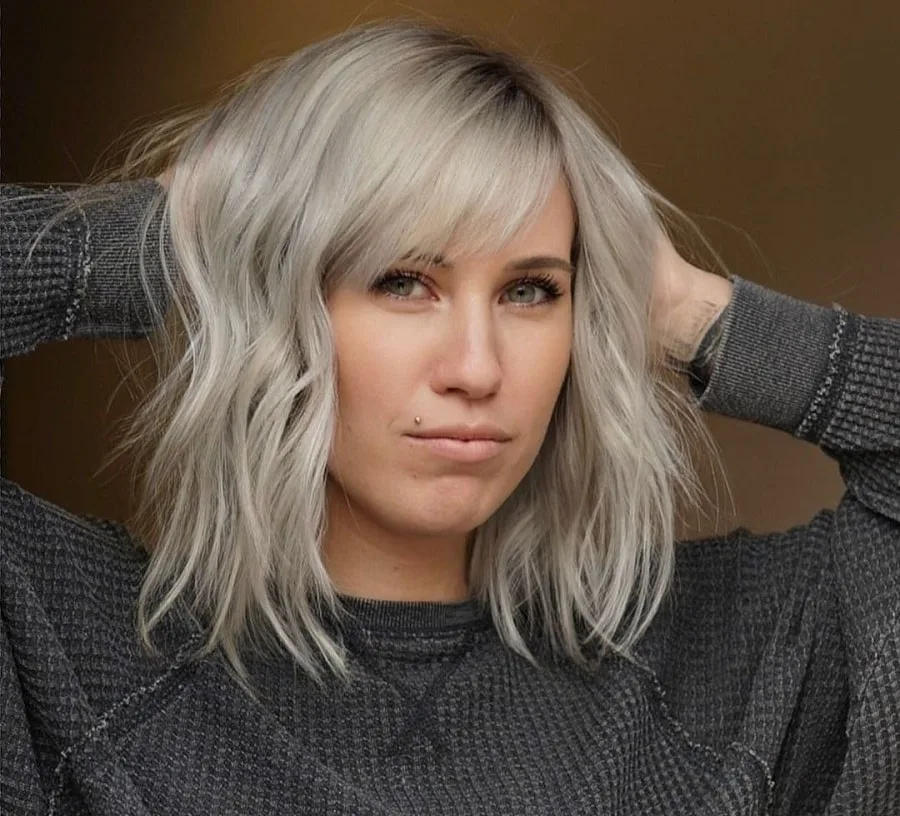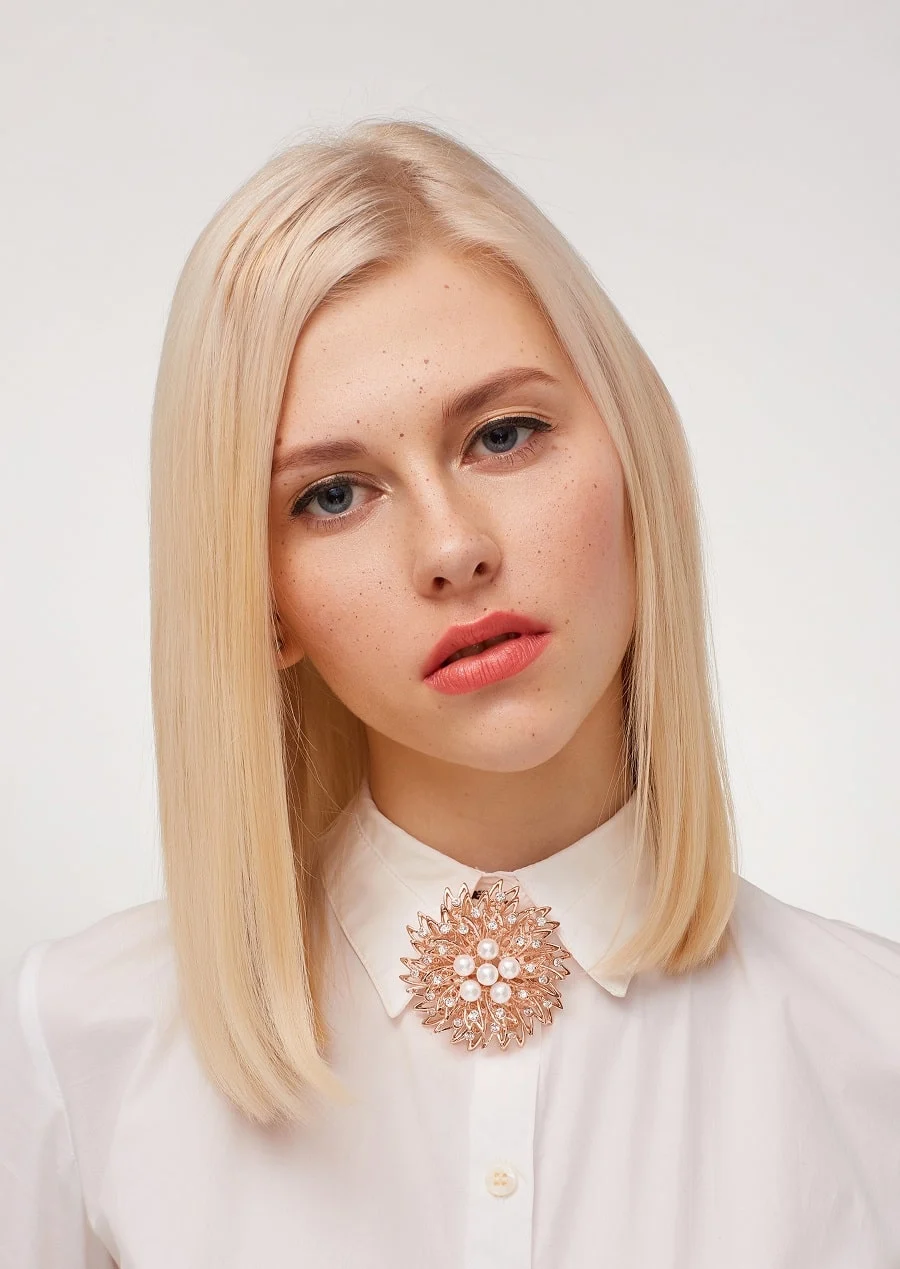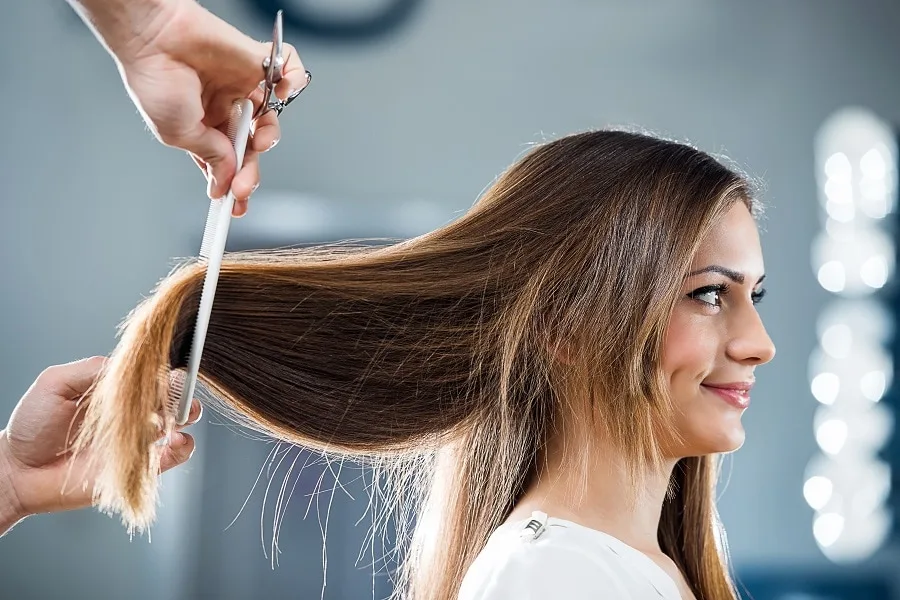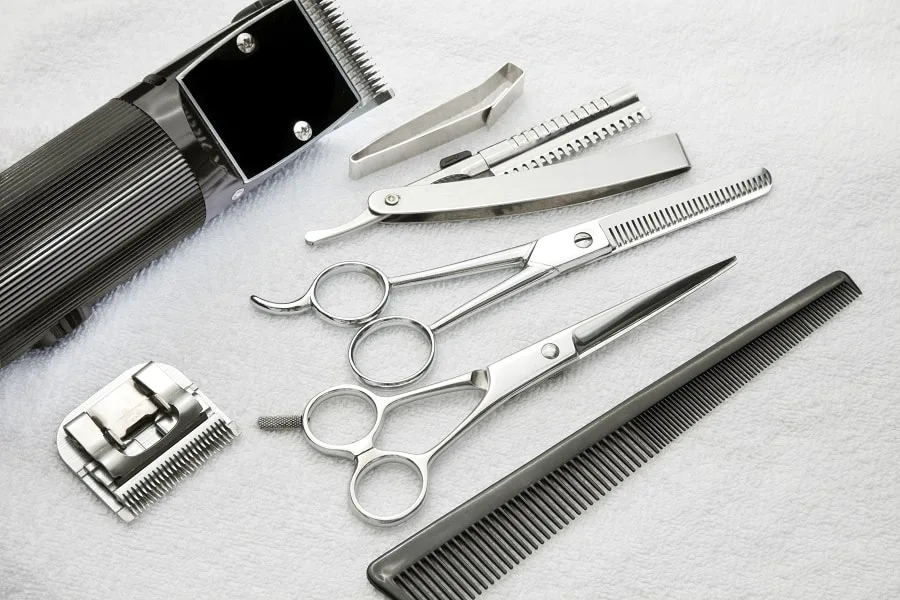If you’re looking for a haircut to freshen up your hairstyle, why not get a textured cut or a blunt cut? Both of these haircuts are stylish and suit different face types. However, you’ll be in a textured cut vs blunt cut dilemma if you get confused between these two. So, what are the key differences between textured cut and blunt cut?
The key difference between textured cut and blunt cut is in the technique used and your hair’s final appearance.
Textured cuts introduce varying lengths and layers to the hair. Hairdressers use thinning shears, razors, or point cutting with scissors to achieve this effect.
The blunt cut features a straight, even edge, where all the hair is cut to the same length. This cut is usually achieved using sharp scissors and a steady hand to create a clean, precise line.
Herein is a detailed comparison of the two haircuts.
What Is a Textured Cut?

A textured cut is made by cutting the hair ends at an angle. Stylists use either scissors or razors for textured cuts.
Angled cuts allow hair to fall at different lengths, creating the illusion of volume when styled. They also add definition and movement to straight hair. Textured cuts work well in both long and short hair.
What Is a Blunt Cut?

A blunt cut is made by cutting the ends of your hair straight across with scissors. In blunt cuts, the hair strands end at the same level giving a sleek, bold, and shaped haircut.
The blunt cut is popular for women with thin hair as it adds thickness to ends. Blunt cuts are also a great way to remove damaged hair or split ends. This cut is popular in bobs and bangs but also works well with long hair.
What Do Textured and Blunt Cuts Look Like?

Textured cuts vs. blunt cuts, how do they differ in their final appearances?
Textured cuts have layers, with most strands falling at different levels throughout the hair. These layers can be long or short, depending on the hair length.
The most distinguishing factor in blunt cuts is that the hair falls to the same level. They have a clean, precise edge that adds shape to the hairstyle.
Despite these differences, you can combine the two styles. For instance, you can have a blunt-cut bob with layers.
Key Difference Between Textured Cut and Blunt Cut
In addition to appearance, textured and blunt cuts have other differences, ranging from ease of maintenance to suitable hair types and lengths.
Here is a comparison table showing the similarities and differences between textured cut and blunt cut.
Characteristic | Textured Cut | Blunt Cut |
|---|---|---|
|
Process | Angled Cuts with layers, varying lengths | Straight cut around the ends, cut to the same length |
| Appearance | Soft, natural, and voluminous with movement and dimension | Sleek, polished, and structured with a precise, uniform edge |
| Volume & Movement | Adds volume and movement to the hair | Can create the illusion of thicker, fuller hair, but may appear flat or uneven in some cases |
|
Tools Used | Scissors and razor | Scissors |
|
Suitable Hair Type | All | All |
| Hair Texture | Best for medium to coarse hair |
Best for fine to medium-textured hair |
|
Hair Length | Short, medium, and long |
Short, medium, and long |
|
Maintenance | Needs more maintenance and styling |
Doesn’t need much maintenance except a regular cut |
| Cost | It may cost more as it takes longer |
Cheaper |
Process

Stylists achieve textured cuts by cutting the hair at an angle and blunt cuts by cutting across the hair. The stylist could use several techniques in textured cuts to achieve the desired result. The most common technique involves snipping, where the stylist holds the scissors vertically to your hair and cuts.
Blunt cutting, on the other hand, involves cutting straight across the hair. It requires precision to ensure that all hair strands fall at the same length. Therefore, the first thing a hairstylist does is straighten your hair.
Hair is cut from the back to the front and the hair along the nape act as a guide. Some stylists will cut the lower half of the hair when wet to get a better guide.
Tools Used

In textured cuts, stylists either use scissors or a hairdresser’s razor. Your hair type will influence the type of tool your stylist chooses. Razors cause curly and wavy hair to become frizzier.
Blunt cuts, however, require scissors. The stylist will also use combs to guide the hair as they cut to ensure an even cut.
Suitable Hair Type
Blunt ends give hair a lighter appearance. They are, therefore, ideal for people who want to reduce the volume of their hair. They work well for people with thick, long hair who prefer to wear straight hair.
Blunt cuts also work with fine hair as it adds body to it. They work well with most hair types except curly hair. Blunt cuts on curly hair increase the risk of frizzing and are not as flattering.
Textured cuts, on the other hand, work for different types of hair. These cuts are an excellent way for people with fine hair to add volume to their hair. They work well with curly and wavy hair types, especially when the layers are placed unevenly within the hair to create the illusion of volume.
Overall, blunt ends work well for people who want to add weight and structure to their hair, while textured ends add volume and movement to the hair.
Hair Texture
The hair texture influences how textured ends vs. blunt ends work. Fine textured hair is soft and often remains straight, making it the perfect hair type for blunt cuts. Since fine-textured hair is more prone to damage, introducing textured cuts into it introduces more split ends into your hair.
Medium textured hair works well with textured cuts and blunt cuts. Unlike fine hair, it holds volume well and is not as prone to damage. Therefore, it can be texturized through cutting without damaging the hair.
Coarse-textured hair is the heaviest hair type. It often results in thick and dense hair. Its texture makes it perfect for textured cuts, which reduce the bulk of your hair while creating layers.
Hair Length
The hair length doesn’t matter much in the comparison of textured haircuts vs blunt haircuts. These cuts work well for hair of all measurements. Blunt cuts are perfect for bangs, cropped cuts, bob cuts, shoulder-length, mid-length, and long hair.
Textured cuts look great on pixie cuts, bobs, and mid-length to long hair. You can style textured cuts to introduce different layers within the hair.
Maintenance
Blunt and textured cuts have different maintenance requirements. Blunt cuts are more laid back and require less styling than textured cuts.
Blunt cuts require regular maintenance to keep the ends looking neat. You’ll need to visit the salon after four to six weeks to have the split ends trimmed off.
Textured cuts also require trimming every four to six weeks to keep the split ends in check. With textured cuts, your hair has more levels and cuts, thus prone to more split ends. If your hair grows fast, you may need to trim your hair sooner to maintain the layered look.
Textured cuts also require extra styling for the layers to look great. They may need more care than blunt cuts when you’re getting ready.
Cost
The cost of textured cuts vs blunt cuts depends on your hair length and the additional styling required. Generally, blunt cuts take a shorter time and are cheaper than textured cuts. Textured cuts require more maintenance and might be costlier in the long term.
Now that you know the difference between textured cuts and blunt cuts, you can decide on the cut that works best for your hair. Textured cuts will introduce layers to your hair, while your hair falls to the same level in a blunt cut.
